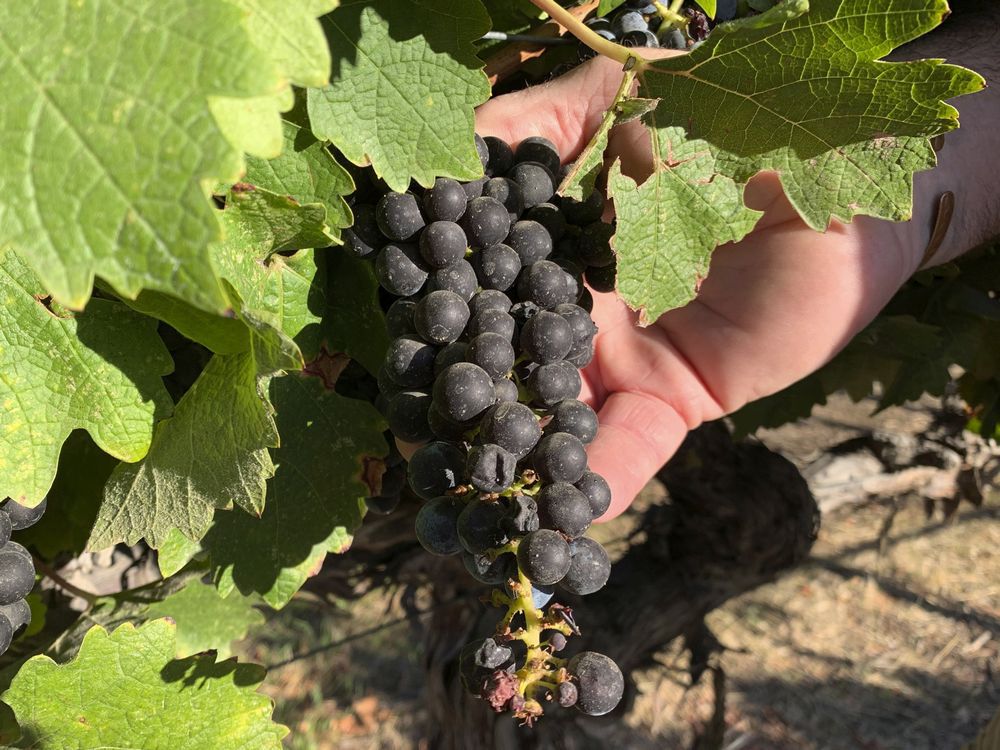Article content
In Burgundy, grape-harvest data goes back to 1354, and it shows air temperatures have gone up so much that grapes today are harvested two weeks earlier than they were in medieval times.

The region that stretches from Osoyoos to Vernon favours grapes that are already bred or have evolved for extreme conditions.

In Burgundy, grape-harvest data goes back to 1354, and it shows air temperatures have gone up so much that grapes today are harvested two weeks earlier than they were in medieval times.
This advertisement has not loaded yet, but your article continues below.
The biggest spike in those temperatures have occurred since the early 1990s.
Winemaking in the Okanagan, where 84 per cent of B.C.’s grapes are planted, doesn’t go back as far — Calona Wines began using grapes instead of apples for its wine in 1935.
But Elizabeth Wolkovich, an associate professor at UBC’s faculty of forestry, has been unable to find data for phenology — the timing of a plant’s developmental stages such as bud burst and ripening — prior to 2001.
“(Growers) might think weather hasn’t been an issue for them in the past,” Wolkovich said. “I think the issue is that at least you had 50 years of data to draw on for what the weather is like, the data gave you a good average. “And now it’s just out the window. The last 10 years is your best guess, and 10 years is not a lot of data.
This advertisement has not loaded yet, but your article continues below.
“I don’t think any grower today will say (climate change) isn’t a big issue. They know it’s a big issue and they have their own versions of how they’re going to handle it.
Grape vines are a very adaptable crop.
The region that stretches from Osoyoos to Vernon and its myriad of sub-regions, each with its own distinct climate and soil conditions, also favours grapes that are already bred or have evolved for extreme conditions.
“The valley is so extreme from north to south, it’s one of only three or four places in the world where you can grow such a variety of grapes,” said Matt Dumayne, the chief winemaker at Summerland’s Okanagan Crush Pad. “The fact we’re having a couple of extreme heat events doesn’t really change things in the big scheme of things.
This advertisement has not loaded yet, but your article continues below.
“I mean, we’re growing grapes in an extreme climate. If you’re looking for consistency every day, you might as well be making Coca-Cola.”

Most parts of the Okanagan have experienced temperatures in the 30s and 40s since the middle of June. And there has been little rain.
“We’re lucky in that grape vines are (hardy), grapes come from the Middle East,” said John Bayley, viticulturist at Blasted Church Vineyards at Okanagan Falls and president of the B.C. Grapegrowers’ Association. “While this is many iterations down the road, they are resilient plants, which is why they do well in the tough growing regions around the world.
“But yeah, they do get pushed.”

Recent mild winters followed by spring frosts have had a worse effect on vines than summer heat blasts, Bailey said.
This advertisement has not loaded yet, but your article continues below.
If anecdotal stories about wineries digging up their vines to plant hardier varieties are true, winemaker Dumayne said it is probably because the wrong variety of grape was planted for the conditions in the first place.
“If people freak out and react to (short-term) heat events and try to think about planting new things to adapt to climate change, you’re not going to see a result (for a few years).
“If they’re ripping something out, I’m assuming it may not have been the correct site to begin with for it. To rip out vines based on a week of super-hot weather doesn’t really make a lot of sense to me.”
Dumayne said his winery is still expecting to harvest at the usual time, late September or early October.
“There’s no heat damage, there’s no sunburn on any berries so far. The only change we would have seen is our water usage has increased very slightly to keep the vines happy.”
Source: vancouversun.com